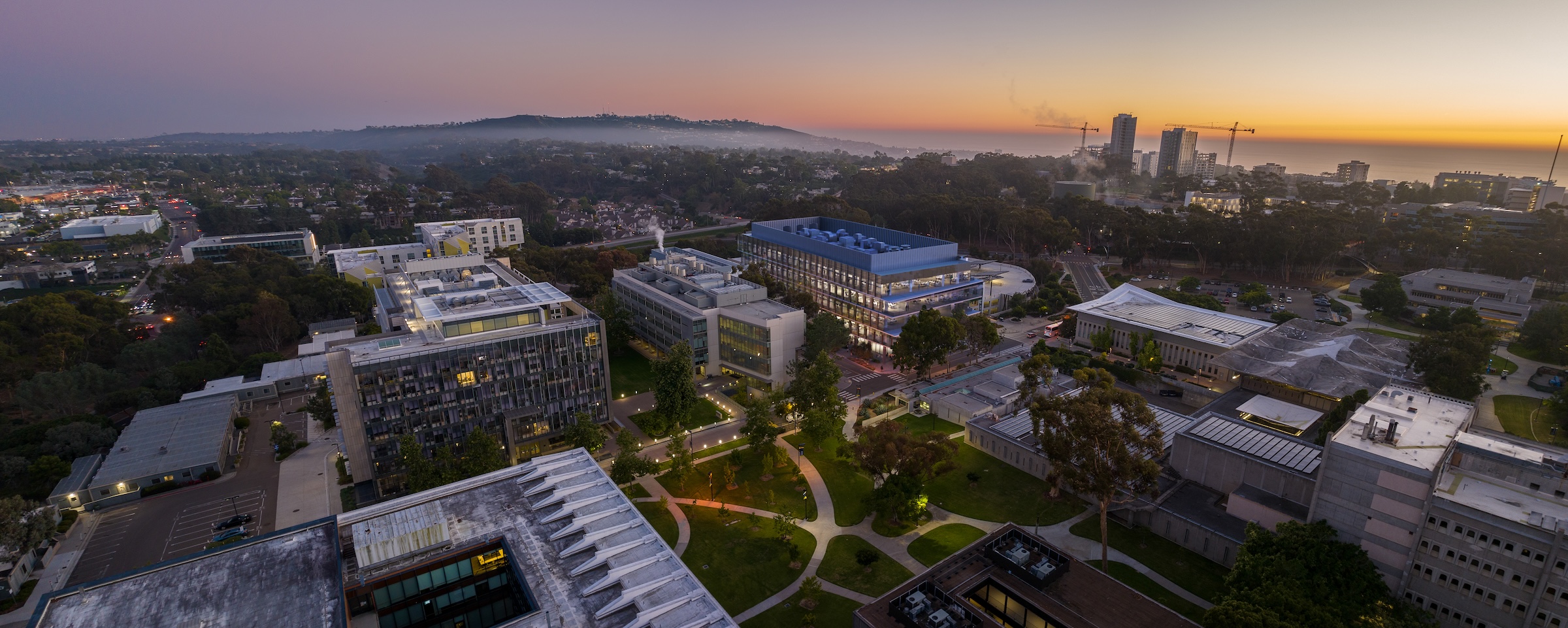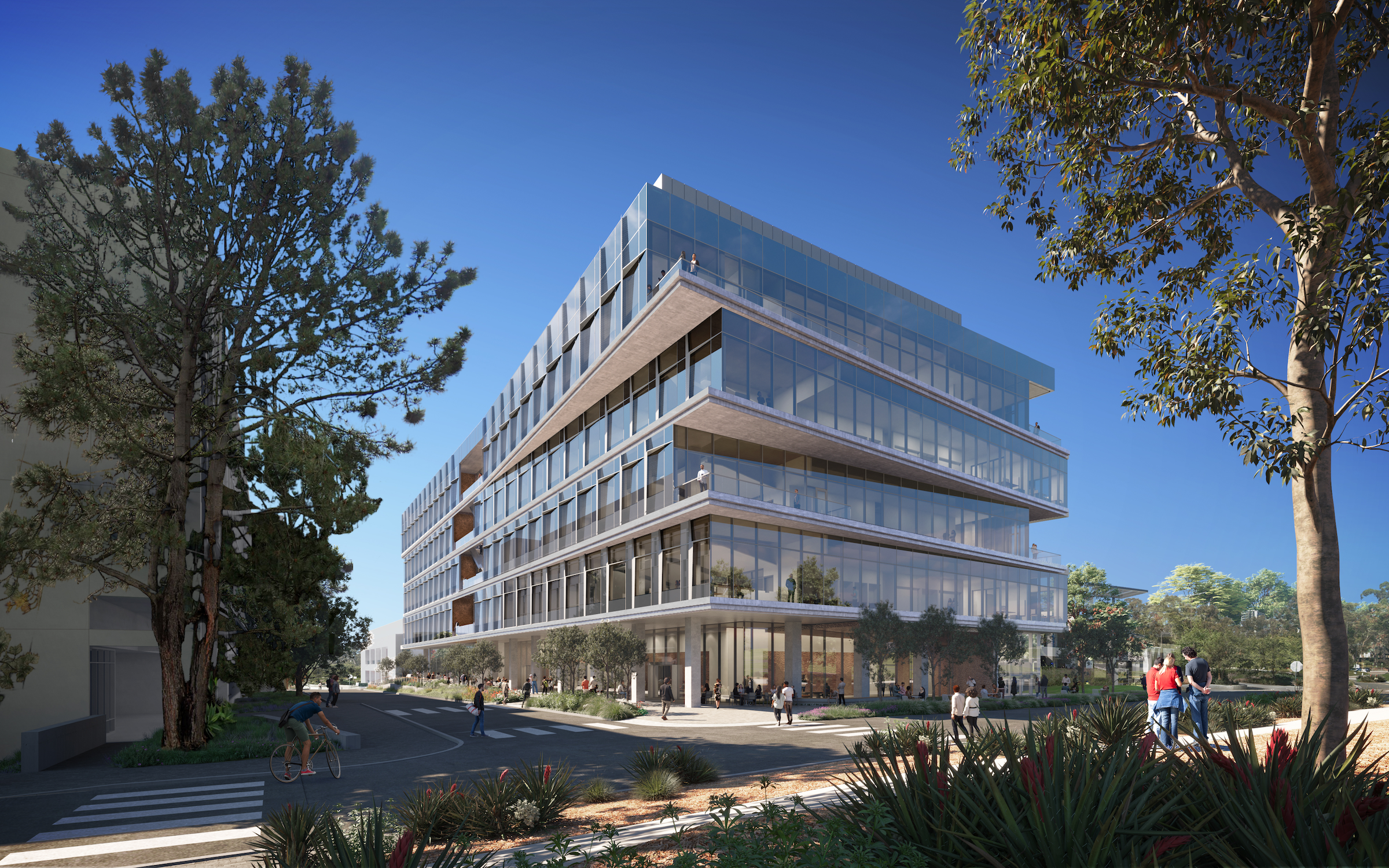The University of California San Diego has approved plans for a new Multidisciplinary Life Sciences Building, with construction starting this fall. The 200,000-sf, six-level facility will be the first building on the UC San Diego campus to bridge health science research with biological science research and teaching.
The facility aims to help meet a growing demand for modern teaching and research space across disciplines at UC San Diego Health Sciences and the School of Biological Sciences. Research and teaching will focus on the intersection of neurodegenerative disease, inflammation, immunology, and infectious disease—using advanced technologies to drive discovery in academia and industry.
The design by Flad Architects creates scientific neighborhoods that support interdisciplinary collaboration and education at the interface of biology, machine learning, and advanced instrumentation. The research laboratories enable flexibility in response to changing programs and research, while the teaching laboratories integrate experimentation, instrumentation, and computational analysis.

The building program also includes shared research facilities, collaborative meeting areas, conference rooms, offices, and public spaces.
In the glass façade, perforated concrete fins serve both as a shading device and as a light shelf reflecting natural light into the building. The massing also creates outdoor terraces on each floor. The building’s upper floors are offset, creating the appearance of rotated stacks. The street level, with biological science classrooms and shared meeting rooms, will put science on display.
“The Multidisciplinary Life Sciences Building will help solidify UC San Diego’s standing as a premier research institution in the field of neurobiology,” John M. Carethers, MD, vice chancellor for health sciences at UC San Diego, said in a press statement.
The project is designed to meet LEED Gold certification at a minimum. Construction on the site, currently a parking lot and service road, is expected to start in fall 2024 and conclude in 2027.
On the Building Team:
Design architect and architect of record: Flad Architects
MEP engineer: Salas O’Brien
Structural engineer: KPFF Consulting Engineers
Construction manager: McCarthy
Related Stories
| Jun 12, 2014
Tod Williams Billie Tsien Architects' design selected for new UCSC facility
The planned site is a natural landscape among redwood trees with views over Monterey Bay, a site that the architects have called “one of the most beautiful they have ever worked on.”
| Jun 12, 2014
Austrian university develops 'inflatable' concrete dome method
Constructing a concrete dome is a costly process, but this may change soon. A team from the Vienna University of Technology has developed a method that allows concrete domes to form with the use of air and steel cables instead of expensive, timber supporting structures.
| Jun 11, 2014
5 ways Herman Miller's new office concept rethinks the traditional workplace
Today's technologies allow us to work anywhere. So why come to an office at all? Herman Miller has an answer.
| Jun 9, 2014
6 design strategies for integrating living and learning on campus
Higher education is rapidly evolving. As we use planning and design to help our clients navigate major shifts in culture, technology, and funding, it is essential to focus on strategies that help foster an education that is relevant after graduation. One way to promote relevance is to strengthen the bond between academic disciplines and the campus residential life experience.
| May 29, 2014
7 cost-effective ways to make U.S. infrastructure more resilient
Moving critical elements to higher ground and designing for longer lifespans are just some of the ways cities and governments can make infrastructure more resilient to natural disasters and climate change, writes Richard Cavallaro, President of Skanska USA Civil.
Sponsored | | May 27, 2014
Grim Hall opens the door to fire safety with fire-rated ceramic glass
For the renovation of Lincoln University’s Grim Hall life sciences building into a state-of-the-art computer facility, Tevebaugh Associates worked to provide students and faculty with improved life safety protection. Updating the 1925-era facility's fire-rated doors was an important component of the project.
| May 20, 2014
Kinetic Architecture: New book explores innovations in active façades
The book, co-authored by Arup's Russell Fortmeyer, illustrates the various ways architects, consultants, and engineers approach energy and comfort by manipulating air, water, and light through the layers of passive and active building envelope systems.
| May 19, 2014
What can architects learn from nature’s 3.8 billion years of experience?
In a new report, HOK and Biomimicry 3.8 partnered to study how lessons from the temperate broadleaf forest biome, which houses many of the world’s largest population centers, can inform the design of the built environment.
| May 13, 2014
19 industry groups team to promote resilient planning and building materials
The industry associations, with more than 700,000 members generating almost $1 trillion in GDP, have issued a joint statement on resilience, pushing design and building solutions for disaster mitigation.
| May 11, 2014
Final call for entries: 2014 Giants 300 survey
BD+C's 2014 Giants 300 survey forms are due Wednesday, May 21. Survey results will be published in our July 2014 issue. The annual Giants 300 Report ranks the top AEC firms in commercial construction, by revenue.

















